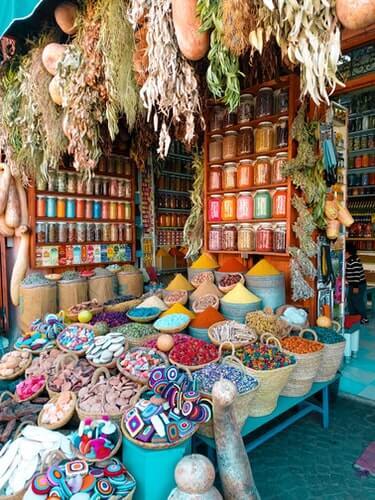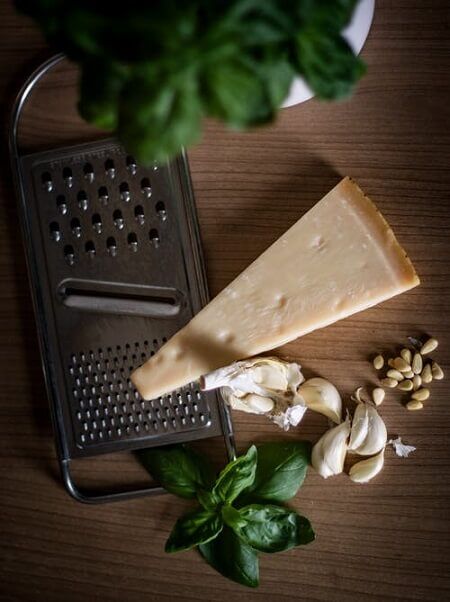A beginners guide to Mediterranean spices
Understanding Spices
Your cart is empty.
SUBTOTAL
£0.00

Understanding Spices
The Mediterranean. Is there a more famous sea? A better embodiment of paradise? You’d be hard pressed to find it.
The area is renowned for its world-class holiday destinations from sizzling Spain to the classy south coast of France. There’s the sprawling boot of Italy, the scattered islands of Greece and the sandy dunes of Morocco. But the sun and sand isn’t the only reason the Mediterranean is so well loved. There’s the food, too. In the words of the late, great chef Anthony Bourdain, “the best meals are the ones with sand between your toes”.
One of the great things about Mediterranean cuisine is how much choice and variety there is. In each country that lines this glistening, turquoise diamond, you will find all kinds of dishes representing different culture and identities. Nearly all of them, we guarantee, use spice.
As discussed in our article looking at the history of the Silk Road, a number of spices such as clove, ginger, turmeric, nutmeg, black pepper, cinnamon and saffron all made their way west. The trade headed north from China, sandwiched between the Himalayan mountains and the Eurasian Steppe, crossing into the modern day ‘Stans’ (Kyrgyzstan, Tajikistan, Afghanistan) before arriving into the Arabic world of modern day Iran, Iraq and Turkey. Further routes then extended through to the Mediterranean and Southern Europe. The Ancient Greeks, Romans, Persians and the Byzantium Empire all benefited greatly from this trade.
Furthermore, the fertile soil and warm temperatures have made the Mediterranean the perfect climate in which to grow many Mediterranean spices and Mediterranean herbs. So, what are the common spices involved in Mediterranean cuisine?
The answer depends on which country you’re in. Below, we’ve put the spotlight on several countries moving across the region from west to east. Morocco, Spain, southeast France, Italy and Greece.


This charming country sits on the northern coast of the African continent. It’s just a short stones-throw away from Spain, across the Strait of Gibraltar – the body of water connecting the Mediterranean Sea to the Atlantic Ocean. This place is well known for its sandy dunes, ancient fishing villages and most importantly, the warmth of its cuisine.
Here, you’re most likely to find blends of cumin, coriander, cinnamon, ginger, onion, tomato and fruit. Indeed, you may already be familiar with dipping your Moroccan olive bread into various dipping oils with fennel, chillies, salt and cumin. There is also premixed spice mixes such as Ras-el-Hanout and la Kama.
Native dishes include the delicious chicken tagine and other variants. Tagines, named after the pottery in which they are cooked, are savory stews – sliced meat, poultry or fish that is slow-cooked together with vegetables. This is combined with a range of spices, nuts and dried fruits including apricot (for the chicken tagine), ginger, cumin, turmeric, cinnamon and saffron. Paprika and chilli, meanwhile, are used in vegetable tagines.
There is also the classic Moroccan mint-roasted vegetables. Moroccans are well known for their love of salads and all things green. Using mint, cumin, ginger, cinnamon and salt, this simple dish really brings your vegetables to life. It’s best served with a generous portion of salted yogurt that really brings it altogether. Classic Mediterranean cuisine.

Moving north, across the Strait of Gibraltar, is Spain. Here, you will find an abundance of olive oil, garlic, nuts, onions, peppers and tomatoes.
Paella, widely accepted as the national dish, is no stranger to these ingredients. It makes good use of chopped tomatoes, garlic, smoked paprika, dried thyme and parsley. Not to mention a dash of white wine (of which there are many to choose from in this country). Of course, fiercely proud and independent, each region of Spain has its own take on the dish. To find out more about the history and origins of paella, you can check out our article here.
That is the beauty of Spain. Each region has its own tastes and flavours. Take ‘romesco’ for example. This exceptionally flavourful sauce is native to the Catalonia region on the eastern coast of Spain. The fishermen of Valls, Tarragona invented the sauce to pair it with their freshly caught produce straight out of the Mediterranean.
You will find it is most commonly made with a mixture of roasted tomatoes and garlic, toasted almonds, pine nuts, and/or hazelnuts, olive oil and nyora peppers. It’s as delicious as it sounds.
Of course, you can’t talk about Spain without discussing tapas. This phenomenon is one of Spain’s best exports. It can either be served as an appetizer – a small snack before the mains – or, you can combine many different options to create a full main meal. The mix-and-match approach is a lot of fun, especially when bar-hopping throughout Madrid or Barcelona.
Some of our favourite spicy tapas options include ceviche – fresh, firm-fleshed fish cooked in an acidic lime juice and spiced with chilli peppers, chopped onions, salt and coriander. There’s also the classic patatas bravas. These hot, spicy potatoes with the sauce to match use all the Spanish favourites. Tomatoes, onion, garlic, parsley, olive oil, chilli powder and sweet paprika.
Or how about pinchitos morunos? These small, spicy kebabs were some of the first to arrive in Europe, brought over from Arabs trading in North Africa (including Morocco, of course). In Spain, Pinchitos are usually made of lean diced pork or chicken, marinated with olive oil, and herbs and spices such as garlic, cumin, thyme, paprika, oregano, turmeric and pepper, all seasoned with salt.

Next door to Spain, the southeast of France is one of the most renowned foodie destinations in the world. Its unique way of cooking is known as ‘provencal’ and its Mediterranean influences differentiate it from the rest of the country. Here, it’s not necessarily about the fiery heat common in other countries. Instead, you will find the famous ‘herbes de Provence’ (herbs of Provence) that add the flavour of the region to their dishes. It’s typically a mix of rosemary, sage, marjoram, basil, thyme and savory.
You may find this spice mix in marinated discs of goats cheese (the French do cheese so well, don’t they), or perhaps some dried salami. They also flavour grilled foods such as fish, meat and vegetable stews.
Furthermore, the French have a brilliant knack of making use of everything. Take ‘pieds paquets’, for example. Translated, ‘pieds’ means ‘feet’ and ‘pieds paquets’ is ‘packets of feet’. Sound appetising? It’s a specialty of Marseille and Sisteron. Usually lamb, these feet are cleaned and de-haired before being added to the bottom of a pan. Tripe is then added, wrapped up in packets of spices and herbs (onions, garlic, parsley and salted pork) before the dish is left to stew in white-wine sauce.
If feet aren’t enough for you, there is always the escargot, of course. Soft, tender snails cooked in a garlic butter, perhaps with thyme, parsley and pine nuts.


Italians are fantastic at many things. But perhaps above all, they are masters of food. The cuisine of southern Italy, infused with Mediterranean influences, is well known for its riotous colour and combinations. These dishes will often include some, if not all, of garlic, olive oil, tomato and parsley.
In regions such as Sicily, with the Mediterranean on the doorstep, you will find an abundance of seafood. Mussels, squid, octopus, sardines, tuna, anchovies and swordfish, all plucked fresh from the sea first thing in the morning. In restaurants all around you will find brilliantly simple but delicious dishes such as grilled squid served with lettuce salad, mint, parsley and an anchovy pesto.
Indeed, pesto features heavily throughout Italian cuisine, particularly pasta dishes. Originating in Genoa (Genova), on the country’s north Mediterranean coast, this sauce traditionally consists of crushed garlic, pine nuts, salt, basil leaves and parmesan cheese. Interestingly, the ancient Romans were eating something very similar, known as ‘moretum’. This consisted of crushed garlic, salt, cheese, herbs, olive oil and vinegar.
The main difference in pesto is the inclusion of basil – a herb that grows prolifically throughout Liguria (the north Mediterranean coast region of Italy) and bordering Provence in France (see above).
Meanwhile, back in the south, in the Calabria region, you’ll find ‘Nduja. Originating in the small town of Spilinga, it is a soft, spreadable salami well known for its spicy flavour. It’s mainly served with bread and cheese but has also made its way into a variety of pasta sauces.
Of course, you can also keep things relatively simple by sprinkling a bit of fresh parsley over your tomato and mozzarella pizza. Sometimes, you just can’t beat the classics.

Rounding off this whistle stop tour but by no means bottom of the list is Greece. In fact, some would argue, Greek cuisine is Mediterranean cuisine. Or at least, the best representation of how we often perceive Mediterranean food to be. A few of the common spices found here include cinnamon, garlic, basil, oregano, marjoram, parsley, thyme, nutmeg, rosemary, black pepper and salt.
No matter which Greek dish you’re having, it’ll most likely be served with the famous dip Tzatziki. Fortunately, it’s easier to make than it is to pronounce correctly. It’s a simple blend of salted strained yogurt mixed with cucumbers, garlic, salt, olive oil, sometimes with vinegar or lemon juice and herbs such as dill, mint, parsley and thyme.
Looking at main dishes, you can’t miss Moussaka. Although it’s found throughout the Mediterranean and Balkan regions, the Greek variant of this dish is particularly well known and lauded. It’s based on layers of sautéed aubergine, minced lamb and fried puréed tomato These are combined with a mix of onions, garlic and spices like cinnamon and allspice. There’s also a bit of potato and a final topping of béchamel sauce and cheese.
If looking for something a little faster, Souvlaki is still Greece’s go-to. Served on chopped tomatoes and onions in pitta bread with a generous spread of tzatziki, this skewered pork will often be seasoned with a mix of oregano, paprika, thyme, ground cumin, garlic, salt and a freshly ground pepper.
Meanwhile, if you’re grilling fish or calamari (which on these Mediterranean islands you absolutely will be), there’s a few herbs to use. A combination of a few sprigs of dried thyme and rosemary, as well as oregano and the use of bay leaves as a bed on which the fish grills give it the Greek touch. Simple, yet delightful.
In conclusion then, we think you’ll agree that the Mediterranean region is exploding with all kinds of fantastic cuisine! And a large percentage of these dishes all use a lot of spices and herbs that make them some of the most flavoursome meals in the world. This article barely scratches the surface in terms of the countries and options available, but we hope it’s served it’s purpose in making you hungry and introducing you to a very special part of the culinary world.
Understanding Spices
Spices have long been integral to the UK's culinary landscape, adding depth, flavours, and richness to a myriad of dishes. From the pungent aroma of cumin in Indian curries to...
Read MoreUnderstanding Spices
Confetti is an essential part of any wedding day. Not only is it a wonderful way to greet a newlywed couple, but it also provides some beautiful photo opportunities. The...
Read MoreSeasonal Ideas
It’s no secret that any handmade gift will always be more special than a store-bought one. Homemade food gifts are especially wonderful, a labour of love that shows someone you...
Read MoreHealth and Wellbeing
It’s no secret that winter’s cold and gloomy weather makes us crave indulgent dishes like fondue and baked goods like sticky toffee pudding and apple crumble. While Christmas is the...
Read More